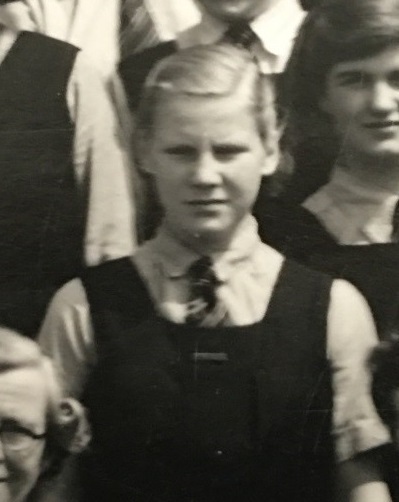Hilary Jennifer Pole MBE (1956)

Born in Yorkshire, Hilary was the first child of Eric and Mona Pole. By 1943, Hilary had been joined by a brother, Ian, and sister, Wendy. Their family became an integral part of the local community.
In spite of the war, the Poles had a very happy family life. Hilary became infamous at her junior school, where her teachers described her as ‘lively’ and ‘energetic’.
At the age of 12, Hilary transferred from KE Handsworth to King Edward VI High School for Girls. Hilary loved KEHS and her real passion was sports. She went on to study botany, zoology and art at A Level and then all of her favourite subjects together at the Marsh College of Physical Education: gymnastics, dance, biology, physiology, anatomy, English, music art and education.
Despite initially being very home sick, Hilary excelled at college and made the most of every opportunity. She completed her first school teaching placement and loved every moment.
However, Hilary’s final term took a turn for the worse. She began to tire more easily, and although she was told initially her symptoms were the result of stress, Hilary was later diagnosed with myasthenia gravis – a condition that reduces the body’s ability to send and receive nerve impulses. With fewer than 600 people in the UK living with the condition, little was known about myasthenia at the time; whilst a gentle life at home was made possible for some with the help of medication, for others the condition would prove fatal.
Hilary’s days of sport and teaching were over. Within just a few years, Hilary was only able to control movement of about 2mm in one big toe. Though she could hear, she could not see, speak or breathe unaided.
Hilary was eventually given a Patient Operated Selector Mechanism (POSM), a communication system for people with significant disabilities, which she could control using the movement in her big toe. Though slow, this enabled her to use a typewriter, radio, fan and talking book independently. She began to write poetry and articles, organised her own medical treatment, listened to talking books, and began acting as a committee member for POSM. Hilary wrote in a letter to KEHS:
“I can have speedier, more lucid conversations; write my poems and letters in private; to quote one of my friends, I can now be risqué without the whole hospital knowing! I can entertain myself and my visitors, how and when I choose. It's fantastic, a miracle. I never have had time to be bored, but since the advent of my POSM well! If anyone knows or hears of a reliable time machine that would give me at least 30 hours in each day—please let me know—and quickly.”
Hilary’s writings were featured in the press across the country and she soon became a well-known advocate for disability rights. In 1973, Queen Elizabeth awarded Hilary an MBE for her work. 127 people crowded into Hilary’s room for a special celebration congratulating her. She said “I am specially delighted as it shows that…disabled people have their part to play in society”. KEHS pupils were taken to visit her often, to take inspiration from this remarkable Old Edwardian.
Hilary passed away on a summer day in 1975. Despite being motionless for so long, Hilary lived a full life, finding the mental strength for contentment, and joy in serving the community.
Hilary was among the 80% of girls at that time who came to KEHS free of charge. Her education here - the books she had read, topics she had studied, concerts she had attended, memories she had made – gave her the foundations to create a vibrant world in her own mind.
